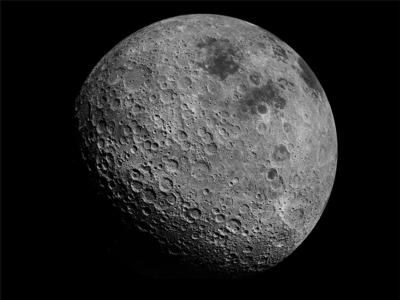Collins Aerospace Down, but Not Out
Humanity is, more or less, on its way back to the moon—and it’s going to need a good tailor. To that end, NASA has selected Axiom Space—the Houston-based, privately-funded space infrastructure concern—to design, develop, qualify, certify, and produce a moonwalking system (read spacesuit) for the planned Artemis III mission. NASA, for its own part, will retain authority for astronaut training, mission planning, and approval of the new moonwalking system.

The road to NASA’s selection of Axiom Space was long, and saw the scrapy Texas company beat out tech powerhouse Collins Aerospace for the lucrative $228.5-million contract. Collins—a subsidiary of Raytheon Technologies—remains in competition for the development of low-Earth orbit spacesuits—which differ from lunar suits—as well as lunar excursion suits for future Artemis missions. The two companies were the sole competitors for the contracts which, all told, could be worth upward of $3.5-billion through 2034.
After the fashion of all governmental undertakings, NASA’s in-house effort to develop new spacesuits proved a decades-long, $200-million, abjectly unfunny joke that the space agency’s inspector general cited as a major limiting factor in sending human beings back to the Moon's surface.
Lara Kearney, manager of NASA’s Extravehicular Activity and Human Surface Mobility program, states: “NASA is proud to partner with commercial industry on this historic mission that will kickstart the United States building a lasting presence on the surface of the Moon. What we learn on Artemis III and future missions on and around the Moon will pave the way for missions to Mars. Spacesuits enable us to literally take that next step.”
The new Axiom suits will replace a large part of NASA’s moldering stock of rehashed, heavily-modified, space-shuttle-era suits—the entirety of which are based on a 45-year-old design. Through the end of its 2022 fiscal year, NASA will continue to work on a spacesuit concept it calls the Exploration Extravehicular Mobility Units (xEMU). Thereafter, the agency will shift into a supervisory role, forwarding all information germane to the xEMU undertaking to Axiom and Collins.

By sharing data and fostering competition, NASA seeks to facilitate the development of two unique spacesuit offerings between which the agency can choose for upcoming missions to the International Space Station (ISS), Earth’s moon, the Gateway space station NASA hopes to build at the Earth-moon Lagrange point, and perhaps even Mars.
As part of its Artemis III contract, Axiom is required to demonstrate the functionality and utility of its new suit in a “spacelike environment”—presumably, a 2024 or 2025 flight to the International Space Station.
Axiom CEO Michael Suffredini puts forth: “We are excited to provide our expertise to meet NASA’s exploration needs, while simultaneously serving our commercial customers in low-Earth orbit and fulfill [sic] future space station goals that enable a commercial space economy. Our modernized, evolvable spacesuits will enable rapid upgrades to implement better, safer technologies over time, ensuring our astronauts are always equipped with high performing, robust equipment. We look forward to providing our space pioneers with advanced tools needed to further humanity’s permanent expansion off the planet.”
 ANN's Daily Aero-Term (05.17.24): Very High Frequency
ANN's Daily Aero-Term (05.17.24): Very High Frequency ANN's Daily Aero-Linx (05.17.24)
ANN's Daily Aero-Linx (05.17.24) ANN FAQ: Submit a News Story!
ANN FAQ: Submit a News Story! Classic Aero-TV: ANN Visits Wings Over The Rockies Exploration Of Flight
Classic Aero-TV: ANN Visits Wings Over The Rockies Exploration Of Flight Airborne Affordable Flyers 05.16.24: PRA Runway, Wag-Aero Sold, Young Eagles
Airborne Affordable Flyers 05.16.24: PRA Runway, Wag-Aero Sold, Young Eagles




